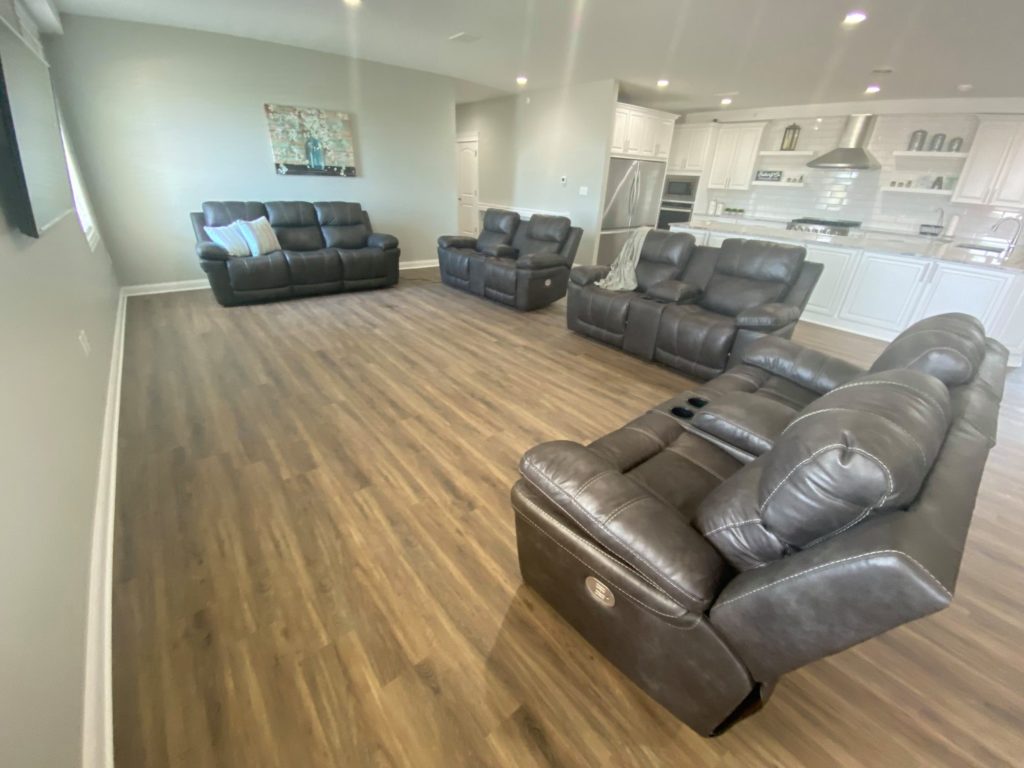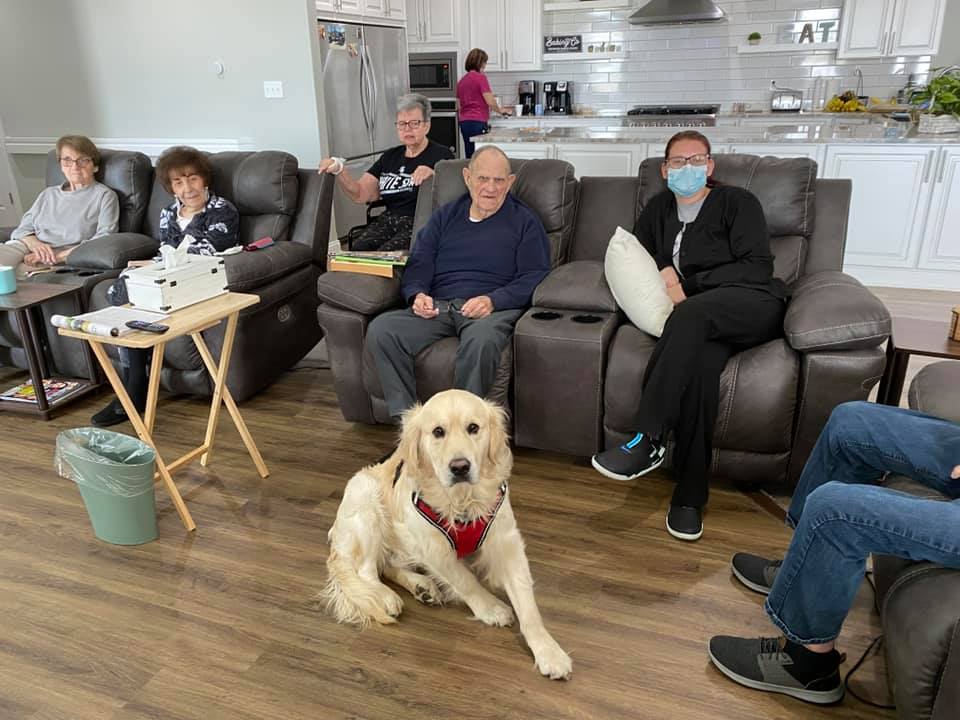What Options Are There for Senior Living?
There comes a time in life when we must seek out options for senior living for our aging adult relative(s). One thing that comes to mind is assisted living facilities or independent living communities. This article will address all the choices for assisted living available.
What are Daily Living ADLS?
Daily living adls are living options allowing assistance with activities of daily living. They are another form of assisted living facility that provides 24-hour care services. These assisted living facilities often including services with memory care in addition to healthcare and activities of daily living. The care typically offered by assisted Living ADLS is assistance with daily tasks, healthcare, and personal care services.

What are Some Senior Living Choices?
How Senior Housing Offers Around the Clock Care?
Older adults want to maintain their independent lives as they search for senior housing options. Assisted living is a type of retirement community that offers seniors ways of living independently. Memory care, skilled nursing homes, or assisted living are some options for seniors of living assisted. We will guide seniors and their families as they search for viable independent living options.
What Options for Assisted Living are Available?
Assisted living or senior housing often brings to mind a retirement community or nursing home. For seniors requiring assistance with healthcare, memory care, or activities of daily living assisted living is a good option. For seniors not requiring specialized home care or healthcare services, the best living options are independent living communities. Care facilities offer the aged living options providing health care with a home care environment.
What are the Main Options for Senior Housing?
When seeking viable solutions for senior living and healthcare there are several options. This section will cover the seven main types of home healthcare and living communities. A skilled nursing, retirement community, and home healthcare are all options for your loved one. Each of these is home care services that offer seniors assistance with medical care and personal care.
What is Aging in Place?
When older adults reside with family members or in their own homes, it is referred to as aging in place. These are good senior living options for those who are capable of living independently of homecare assistance. This type of assisted living operates by having home healthcare assist with certain activities of daily living.
How Home Health care can Lower the Cost of Retirement Housing?
An in-home caregiver in an assisted living setting provides personal care services, like meal delivery, house cleaning, and other activities. Also, assisting with minor home modifications or repairs, like installing bathroom grab bars, or ramps for wheelchair access. Home healthcare can lower the cost per month of medical care in comparison to skilled nursing care.
Home healthcare is another one of the healthcare services provided for those who are living assisted. Since family and friends are doing a lot of the home healthcare to help keep their loved ones living independently. This type of living assisted option is a fairly low cost per month assisted living choice for many seniors. The cost of home health care services is well worth the medical care that is received. Medicaid doesn’t always cover all these medical care costs.

What is an Independent Living Community?
Independent living communities are the best-assisted living options for elderly adults capable of taking care of themselves. These types of assisted living communities offer the opportunity to be around others their own age. As well as they have the mental and physical capability of living independently. The seniors in this type of nursing home like to live independent, but are not comfortable living alone. The health care these communities offer makes it one of the best senior living options.
Below are some considerations in determining if a senior adult is a candidate for independent living:
- ZThey are in relatively good health.
- ZDoctor appointments and medications can be managed easily by themselves.
- ZDon’t require additional assistance with the health care of daily living.
- ZMight enjoy life in a community of their peers.
- ZA hassle-free life is of interest to them.
- ZLikes the option of the extra security these communities offer.
- ZThe cost is affordable for the senior to rent/buy within the independent community. Or, they can apply for low-income senior housing assistance.
What is the Village Concept?
The “Village Concept” is one of the three assisted living options for adults. This is a model of assisted living which connects businesses and neighbors.
This assisted living community allows the aging loved one the option of aging in place while remaining at home. It is an excellent option for elder adults looking to live in a retirement community without leaving their homes. This type of care does not lack in providing home care services. Nor is the level of care providing seniors with adequate health care.
These types of senior living housing options are more like a concierge or liaison to the actual services provided. The senior’s neighbors and community provide assistance with certain activities of daily living.
A majority of the care services and assistance are provided by caring community members. Neighbors enlist younger family members offering assistance mowing the grass or taking out the trash. In addition, the senior’s neighbors might offer rides for medical care, shopping, or house cleaning services.
Independent Living Option

These types of senior living options are excellent for the aging person who wants to remain active. Allowing them to continue living independently from within their community. The best part about this type of arrangement is there is no worrying over home maintenance, housekeeping, or cooking.
Independent living communities are set up similar to college dormitories. These communities allow plenty of chances for people of the same age demographic to socialize. An assisted living community such as this helps with maintaining the outside in a more navigable, compact environment. The cost for this option ranges from $1500 to $10,000 monthly. Medicaid often doesn’t pay these costs, therefore, the cost must be paid out-of-pocket.
What is Residential Home Care?
Seniors requiring home care services that are more individualized will benefit from this type of housing. Residential care provides residents with activities of daily assistance (ADLs), meals, lodging, health care, and memory care. Costs for this type of community for seniors are medium. Considered the more affordable assisted living senior housing options, pricing is half the cost of a nursing home.
What is Continued care retirement communities CCRCS?
Continuing care retirement communities are another of the types of senior living available. These assisted living facilities provide personal care for your loved one. Continuing care retirement communities combine skilled nursing with assisted and independent living.
This assisted living option is ideal for older adults wanting to live the remainder of their life in one location. Living their lives without any concerns for the future of their personal care. Continuing care retirement communities may be good when one spouse requires more healthcare services and they want to remain close.
Continuing care retirement communities operate as care levels increase, residents can move to different areas of the community. They can start off in independent living facilities and if needed, move to long-term care.
Of all the senior housing options, continuing care retirement communities are the most expensive. This is because of a high fee for entrance as well as continued fees per month. These fees can increase should the level of care also increase.
What do Retirement Facilities offer?
These types of senior living facilities are best for older adults who want to live independently but need some assistance.
In assisted living housing staff members make themselves available 24 hours a day to residents. Offering their assistance with medication management, meals, transportation, bathing, dressing, and housekeeping. In addition, this type of nursing home has a group dining section along with areas designated for social and recreational events.

What does a Skilled Nursing/Nursing Home Offer?
Assisted living operates with a licensed physician available to supervise the healthcare of residents. There are also nurses on the premises available to provide 24-hour medical care. An assisted living facility may also have staff on-site to provide occupational and physical therapy. As well as memory care services for residents with dementia or Alzheimer’s disease.
10 Ways to Help Find a Senior Living Option
When a senior transitions into senior living, it is much like moving into any other new residence. It can seem overwhelming, just as any other major life change does. We have compiled a list of the 10 steps to help you choose the right senior living facility.
Step 1: Know what Each Type is and How it Operates
Continue Care Retirement Communities CCRCs:
Many small communities provide continued housing while transitioning to an assisted living home from independent living. To the eventual transfer to nursing homes.
A Continuing Care Retirement Home:
These homes are designed to assist those with needs from rehabilitative to sub-medically acute. This type is normally considered a center for long-term care. Some residential care homes are on a monthly rental or a fee paid once upon entry. These charges are in addition to recurring monthly charges.
Assisted Living Facilities:
They are popular senior communities for those who want to live independently but require help with basic needs. These needs can be meals, medication, and personal care. These senior living options do not give the same skilled care as for nursing homes. They work with others outside of the home to give residents medical assistance. However, the resident’s family is responsible for ensuring the ongoing health care services.
Additionally, the Greenhouse models are another type of assisted living home. These unique living settings provide residents with a socialized community and level of care more similar to home.
Step 2: Discover Which Facility is More Fitting
Many factors go into determining whether your loved one will be comfortable long-term in a senior living facility. Factors, such as location, floor plan, apartment size, amenities, decor, and options for dining and dietary are all imperative. The average resident is 85 or over and most women (70 percent, according to national averages).
Therefore, what is good for an elderly woman might not be for a man or younger resident. Ensure to ask for a list of activities for seniors in assisted living to ensure the home offers appropriately stimulating activities and events. You want your elder person to feel they fit in and have an efficient amount of social support.
You want to make sure the community is one that has sufficient transportation and allows for adequate social connectivity. Other indications a community fulfills one’s needs are their programs for physical fitness. In addition, if your loved one has a pet you need to make sure the facility is pet-friendly. It is required by law that all healthcare and nursing homes allow blind residents their special needs dogs.
Step 3: Planning a Future Budget
Step 4: Visits are Important
You should probably visit one or two facilities each day–during the night and day so you can observe both settings. Ensure to meet with the highest level staff personnel available. Perhaps taking a tour that also has one or two meals included.
Take pictures and ask as many questions as you can think of, jotting the answers for reference later. If at all possible, visit the facility at night to watch how the night shift treats residents.
In addition, during your visit or tour enlist each of your five sensations. Smelling, touching, and seeing everything. Verify that the physical conditions and maintenance of resident apartments are taken care of.
Smell for any offsetting odors which might indicate poor housekeeping. Also, touch the surfaces, which also verifies the cleanliness of the facility. Using your sense of intuition, how well kept are the outdoor areas. If it has snowed recently, are the driveways and walkways salted and cleared? You should also use the bathroom the residents use to verify how clean it is.
On a final note, to get a real feel for the place, just talk to the residents. Ask them how they think the staff treats and cares for them. How they feel about scheduled activities and events and if there have been any cases of theft onsite.
Step 5: Make a Comparison of All Agreements
Study and compare the details of each senior living option agreement. Ask what the resident to ratio staff is and what steps are taken as residents age or get sicker.
Are there any penalties or additional fees should a resident exit prematurely?
If so, then ask about the time frames, and conditions involved for any refunds.
When are rates increased?
Normally, rate increases take place in January or July. Residential housing is a competitive business; therefore, it should be fairly easy to negotiate these increases. Particularly, if your elderly adult is living on an income that is fixed.
Sometimes there may be an exclusionary clause within the contract of a senior community. These clauses state that financial instability or behavior are reasons a resident can not stay in the community.
If your elderly adult is on Medicaid, ensure the facility accepts it. Not all senior communities do. Be wary of this before signing any contracts. Or prior to placing your loved one on a holding list for a room.
Step 6: Learn Everything You Can About the Residence
Is this senior living option of assisted community proactive regarding care providers, emergency personal alerts, and wellness tracking? Is there a supervised connection of telemedicine to the doctors? This tracking should enable the subtle detection of healthcare conditions, allowing for speedy diagnosis of probable illnesses.
Step 7: Verify all Credentials of the Facility
If the facility has pending ownerships, it could affect the average stay of a resident. Verify what licenses are held by each senior community you check out. As well as the levels of care they cover if there are any violations, fines, or citations.
Step 8: Make Payment Arrangements
Step 9: Getting a Medical Assessment
You will also need to provide assessments and medical records of your elder loved one. In addition to any hospitals, they might have been admitted to.
Step 10: Complete Ongoing Checks
Ensure to study the bills and finances of the elder persons often to assure they are not being overcharged. If you notice a spike in care charges, question this with the doctor. In addition, check pharmaceuticals and other medical records. Talk to caregivers and nurses aides, best of all–continue to use your best judgment. Best of all, don’t forget about the sixth sense–common sense!
What is the ideal living arrangement for older adults?
How much does a senior retirement home cost?
The most expensive of senior living is the continued care retirement communities CCRCs. This is due to the increased levels of care most residents require. The entrance fees are higher as well as monthly charges.
The average home health care costs a person $4290 each month. This is according to a survey done by Genworth Financial Cost of Care. If you are looking for home health care, it is slightly higher at $4385 a month. Since Medicaid doesn’t pay the cost of senior homes, the family often steps in to help.
How do you pay for independent living?
The first option is the elderly person pays for independent living out of pocket. Using their personal savings, retirement, or pensions. They might sell their home and use the money received from the sale, or they have stocks and bonds. Then in other cases, it’s the children who come together, pooling their funds to pay for the living facility.

Conclusion
Whatever senior living option you eventually choose for your aging loved one. Remember, not to forget your empathy and compassion as you do it. As an adult, it isn’t easy to admit you are not capable of caring for yourself. Particularly, if it’s your children telling you this! As a parent, we want to be the caregiver, not the other way around!
Ensure the senior living community is one that your loved one feels comfortable in. You want to be able to make their new home as familiar as the one they are leaving. This is mostly true for adults with memory care issues. In addition, you also want to ensure the caregivers, medical, and nursing staff are just as empathetic and compassionate.
If you are looking for assisted living in Indiana, call us today, Two Hearts Assisted Living wants to ensure peace of mind for you, and an ideal future for your loved one. You can always do a virtual tour before calling us! Click here for a 360 virtual tour of our home or click here for a personal tour by Janel. Another great way to see some of our activities and residents is by checking out our Facebook page!


